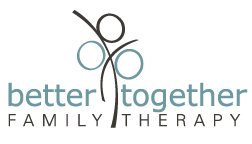Improving Your Child's Learning Space: Tips from an ADHD Therapist
You’ve made it through the first 2 weeks of online school! How is your child’s learning space working out? It is quiet enough? Is it helping him focus?
Now is the time to notice what’s working. And make changes to what isn’t. Sit down with your child or teen to find out which is which.
Questions to ask (from our family therapists):
Are you comfortable in your chair (at your desk, etc.) during school?
Is your computer screen easy to see?
Can you move around enough?
Does anything hurt at the end of the day?
Is it too noisy or too quiet? Are pets or siblings bugging you?
And to support your child’s executive function:
Do you have enough space (pencils, paper, etc.) to write things down?
Do you have a place to put things that you need to go back to?
Is it easy to find your schedule? Your zoom links?
Do you have reminders set for your class times?
Need more help with this? Find more tips in these blog posts: Creating Visual Schedules and Motivating Your Child and Increasing Independence in Online School.
We know the need for parent support is ongoing!
So here are our best tips for creating the best learning space at home.
1. Use the same space daily
Have you noticed that it’s harder to work without your commute? Using a dedicated space for work primes the brain for the tasks ahead.
Is your school space also the dining table? Use a crate or caddy for school materials and lay them out on the table when it’s school time. Boost focus by sitting in different seats at the table for school and for meals.
2. Make it comfortable, but not cozy
Use a chair that is sized for your child. Have a young child with ADHD? A chair that twists, rocks or otherwise moves is ideal.
Avoid blankets, beanbags, and beds. Spaces that put your child in sleep mode will leave her struggling to focus in class.
3. Stock the supply closet
Have pencils, paper, and other basics nearby. Keep them within your child’s reach. Add a snack station with a water bottle and some fruit to help keep your child alert.
4. Create virtual “space” too
If school is offering a laptop or tablet for home use, use it! If using a personal device, log in under a different profile for learning. This keeps open tabs and games out of view at learning time.
5. Provide fidgets, but not toys
Is is hard to tell the difference? You are not alone! See our post What Makes a Good Fidget? to help you follow this rule.
In short, a fidget is something we can touch or move. These movements help keep us alert. But without engaging our brains.
Don’t use a fidget you have to (or want to) think about. Avoid fidgets that spark your creativity. Keep it simple.
Some of our favorite fidgeting strategies are: Chewing a big piece of gum. Doodling. Rolling a ball under the desk with your feet.
At Better Together Family Therapy we often serve families with ADHD and Executive Function needs. Fidgets can be especially helpful for these families, and are helpful for everyone when working online.
We’re happy to help you find the tools that work best for your family! Follow us on Facebook, Twitter, and LinkedIn or sign up for our newsletter (in the footer below) to see all of the posts in our Success in Online School series.
Want more personalized help? Give us a call at 240-242-5185 to schedule a free 15 minute consult!
